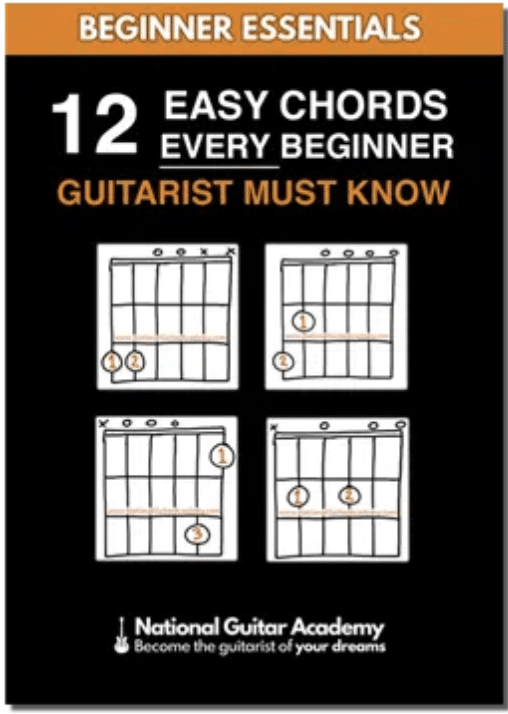How to approach strumming for every song in just a few simple steps.
Okay, in this lesson, we’re going to discuss a teaching concept that we came up with years ago, which has helped thousands of people learn to strum the guitar in time. We hope that it will help you now. We call it the Universal Strumming Pattern. This is a way to think about and approach strumming patterns in general that will work for you on every song. It’s really useful to know, and there are a few simple steps we’re going to walk you through.
Step One: Identify the Beat of the Song
There are lots of ways to do this, but broadly speaking, identifying the beat of a song is how you’d clap your hands or tap your foot to the rhythm. If you look in the timing section of this course, you’ll find a whole lesson dedicated to identifying the beat of a song.
Step Two: Strum One Downstroke on Each Beat
Once you’ve identified the beat of the song, strum one downstroke on each beat. The beat is always regularly spaced, meaning there is an even gap between each beat.
For example, if the chord progression is G to Cadd9, then strum down on each beat: down, down, down, down. That’s step two.
Step Three: Add the Upstrokes
This is where many people struggle because it can feel a little unnatural at first. However, it’s essential to stay at the same pace and simply insert the upstrokes between the downstrokes. Instead of just playing downstrokes, you will now play:
down-up, down-up, down-up, down-up.
A key point here is that the upstrokes don’t need to hit all six strings; just catching the first three (strings one, two, and three) is enough. This pattern will work for nearly every song. While some strumming patterns might be more faithful to the original, this one is a reliable go-to.
Step Four (Optional): Adjust for Slow Tempo Songs
If you go through the first three steps and the song feels too sparse or empty, then you need to double the strumming speed. Instead of adjusting by small increments, you must exactly double it. If you were playing:
down-up, down-up, down-up, down-up
You now need to play:
down-up-down-up, down-up-down-up, down-up-down-up, down-up-down-up.
Use a metronome or a metronome app to help with timing if needed. More details on this can be found in the timing section of this course.
I’ve tested this technique on hundreds of songs, and I’ve never found one where it didn’t work. I hope this helps you! You might need to go through it a few times before it feels natural, but trust me, this is a really useful technique.
What I love about this approach is that it gives you something solid to rely on. As a beginner guitarist, your goal should be to start making music as quickly as possible. That said, there are more complex strumming patterns out there. Some people prefer to use specific patterns for specific songs, and that’s perfectly fine. In the next lesson, Jack will walk you through some of those.
I hope you found this useful and now understand the Universal Strumming Pattern. Go and give it a try!



